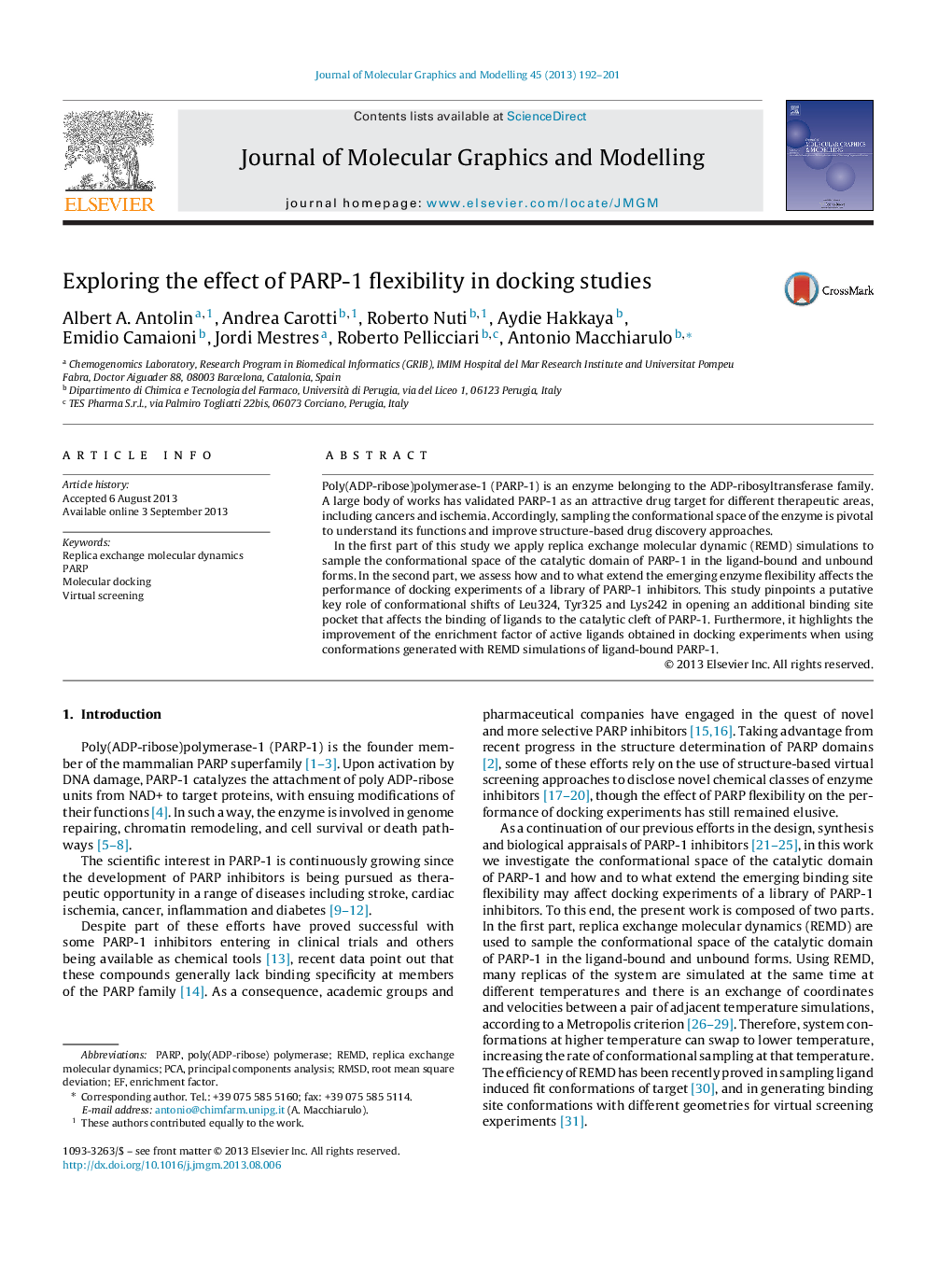| Article ID | Journal | Published Year | Pages | File Type |
|---|---|---|---|---|
| 443637 | Journal of Molecular Graphics and Modelling | 2013 | 10 Pages |
•We used REMD simulations to sample the conformational space of ligand-bound and unbound PARP-1.•We observed the formation of an accessory pocket in the catalytic cleft of PARP-1.•The selection of a PARP-1 conformation containing the accessory pocket improves the results of docking studies.•This study highlights the beneficial effect of incorporating PARP-1 flexibility in docking studies of PARP-1 ligands.
Poly(ADP-ribose)polymerase-1 (PARP-1) is an enzyme belonging to the ADP-ribosyltransferase family. A large body of works has validated PARP-1 as an attractive drug target for different therapeutic areas, including cancers and ischemia. Accordingly, sampling the conformational space of the enzyme is pivotal to understand its functions and improve structure-based drug discovery approaches.In the first part of this study we apply replica exchange molecular dynamic (REMD) simulations to sample the conformational space of the catalytic domain of PARP-1 in the ligand-bound and unbound forms. In the second part, we assess how and to what extend the emerging enzyme flexibility affects the performance of docking experiments of a library of PARP-1 inhibitors. This study pinpoints a putative key role of conformational shifts of Leu324, Tyr325 and Lys242 in opening an additional binding site pocket that affects the binding of ligands to the catalytic cleft of PARP-1. Furthermore, it highlights the improvement of the enrichment factor of active ligands obtained in docking experiments when using conformations generated with REMD simulations of ligand-bound PARP-1.
Graphical abstractFigure optionsDownload full-size imageDownload high-quality image (151 K)Download as PowerPoint slide
